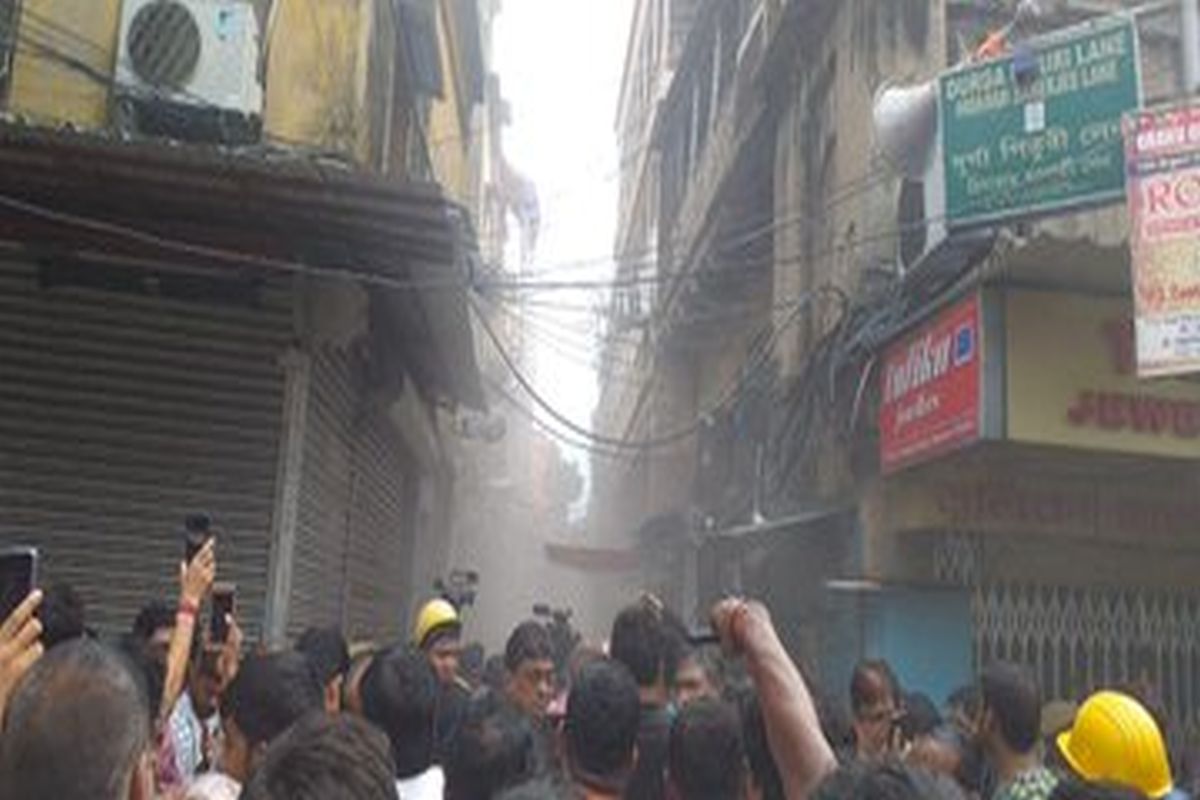KMC focus on slum area development for next fiscal
With emphasis on women-centric projects, the city’s slum areas are slated for an infrastructural development in the next fiscal.
The incident brought officials of Kolkata Metro Rail Corporation Limited (KMRC) officials, Kolkata Police, Disaster Management Group and engineers of Kolkata Municipal Corporation rushing to provide immediate relief to the evacuees.

(Image: Twitter/@sdeepayan)
The East-West Metro corridor today witnessed an unprecedented incident of partial collapse of two buildings at Durga Pithuri Lane and Sankra Para Lane in Bow Bazar. Kolkata Metro Railway Corporation Limited (KMRC) officials claimed the incident occurred after water seeped into the tunnel from the side walls, ceiling and other parts of the tunnel where the boring work was being carried out.
The incident brought officials of Kolkata Metro Rail Corporation Limited (KMRC) officials, Kolkata Police, Disaster Management Group and engineers of Kolkata Municipal Corporation rushing to provide immediate relief to the evacuees. Wide cracks, that became wider with every passing hour, brought apprehensions among the residents of the area. Though the tunnel boring machine was yet to reach the buildings, portions of which collapsed this afternoon, the other 18 buildings began shaking since yesterday.
Advertisement
According to the residents of the area, while portions of two buildings at 13 and 14 Durga Pithuri Lane collapsed, another is likely to collapse any moment. As the occupants started feeling the vibrations yesterday, portions of around six buildings are also reported to have started tilting due to the tunnelling work. The KMRC authorities accepted that the collapses and cracks were due to the tunnel boring work. The partial collapse and the cracks, according to KMRC officials, occurred after water seeped into the tunnel from the side walls, ceiling and other parts of the tunnel.
Advertisement
“The tunnel boring machine is at a distance of around 14 metres from the buildings that witnessed partial cracks today,” informed a KMRC official. The seeping water resulted in the soil getting wet which again led to ground loss. The ground loss below the buildings led to the cracks and collapse of the portions of the buildings. A team of experts working under ITD Cementation has been called to study the case,” he added. The tunnel was being dug at a depth of 14 metres below the ground where usually there is no water. However, in today’s incident, due to reasons unknown even to the KMRC engineers, aquifers were said to be found in the ground below the affected stretch.
Aquifers, according to KMRC sources, are bodies of permeable rock, sand or silt which can contain or transmit groundwater. The seeping water mixed with the soil led to the ground loss which in turn resulted in the partial collapse and cracks in the buildings. Sources in KMRC also informed that a layer of sandy soil of a few millimetres was found below the stretch of buildings at Durga Pithuri Lane and Sankra para Lane in Bow Bazar that have been evacuated. According to KMRC engineers, the sandy soil mixed with the seeping water led to the instability of the ground, also known as ground loss resulting in the cracks and collapse of the building portions. Notably, the KMRC engineers had identified 86 buildings along the stretch of the East-West Metro Project from Esplanade to Sealdah.
The KMRC engineers along with a team of IIEST Shibpur had conducted an Impact Assessment Study (IAS) which is an analysis of the effects of tunnelling activities on the structures that were found to be in danger zone during the visual inspection and owners’ survey carried by the engineers. Around 86 buildings along the stretch were found to be in the most critical category and the KMRC engineers had been taking preparatory measures accordingly by putting in place wooden and steel props and taking other steps.
Advertisement